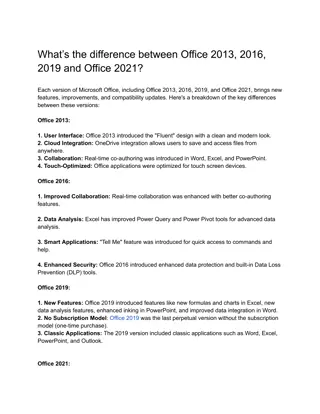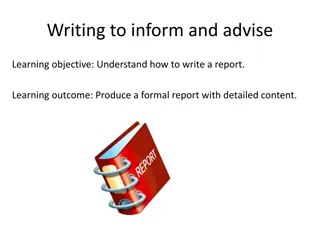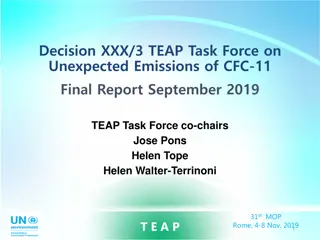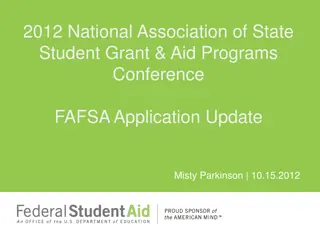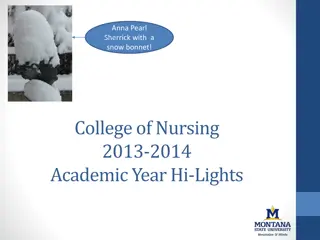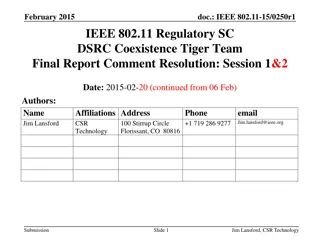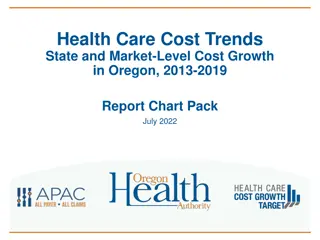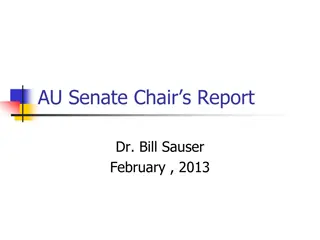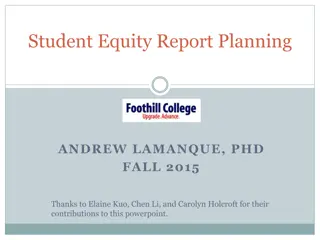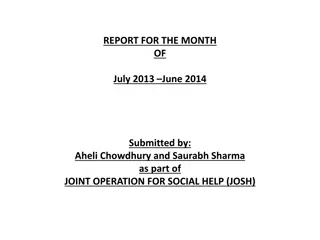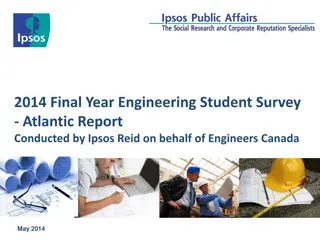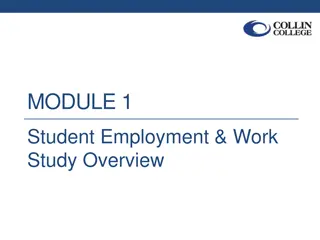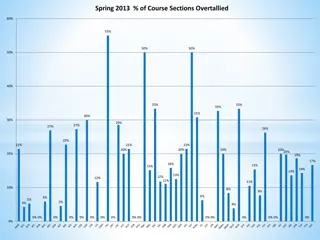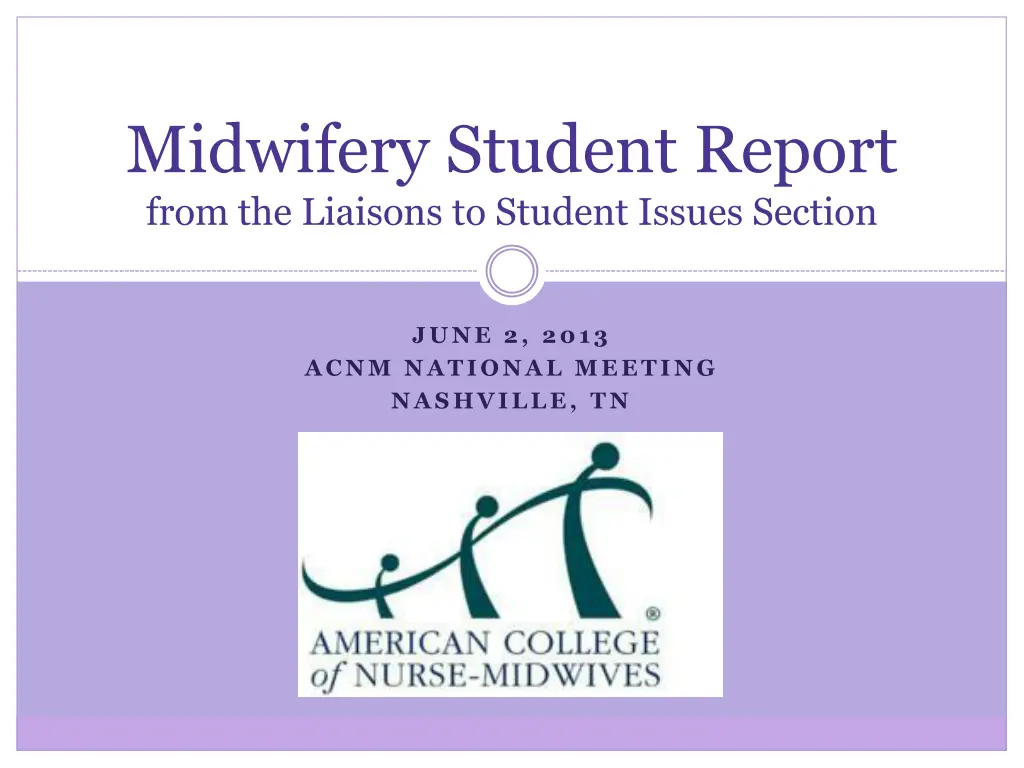
Midwifery Education: Enhancing Collaboration and Sharing Best Practices
Explore the student reports and discussions at the ACNM National Meeting, focusing on key concerns in midwifery education. Discover how programs can enhance collaboration, share strengths, and improve graduates' success. The emphasis is on promoting evidence-based teaching practices and preparing new graduates for inter-professional practice.
Download Presentation

Please find below an Image/Link to download the presentation.
The content on the website is provided AS IS for your information and personal use only. It may not be sold, licensed, or shared on other websites without obtaining consent from the author. If you encounter any issues during the download, it is possible that the publisher has removed the file from their server.
You are allowed to download the files provided on this website for personal or commercial use, subject to the condition that they are used lawfully. All files are the property of their respective owners.
The content on the website is provided AS IS for your information and personal use only. It may not be sold, licensed, or shared on other websites without obtaining consent from the author.
E N D
Presentation Transcript
Midwifery Student Report from the Liaisons to Student Issues Section JUNE 2, 2013 ACNM NATIONAL MEETING NASHVILLE, TN
Student Report 2013 Grateful the ACNM is interested in the student experience . Creating a space for us... Appreciate the opportunity to attend meetings and become a part of ACNM at a student rate Our annual meeting provides opportunities to network with professionals who share common interests . ACNM is truly committed to assist our transition to practice . Dedicated faculty and the support of fellow students is indispensable...
Reviewed 2012 Student Report Work Groups Talking points crafted by student work groups to address key student concerns: Online collaboration Conference calls Webinars Use of Google docs SIS meeting at conference Best Practices in Midwifery Education Transition to Practice Preceptor Issues Certified Midwives We respectfully request the Board to consider current issues when crafting policies that influence student experiences.
Best Practices in Midwifery Education Different Programmatic Strengths in Midwifery Education Enhance Collaboration between Midwifery Educators Adaptation of New Technology
Different Programmatic Strengths Students from all programs graduate with varying comfort with different Basic Midwifery Core Competencies We celebrate the diversity and strengths of different programs, but recognize that every program has areas for growth How can midwifery education programs share their expertise and strengths amongst themselves?
Enhance Collaboration between Midwifery Educators We suggest a leading role for ACNM and DOME for the development of evidence-based teaching practices and curricula Promote research into best practices in Midwifery Education what makes a program and its new graduates successful? Collegial sharing of information, resources, and ideas to share the strengths of education programs and promote consistent quality Prepare new graduates for inter-professional practice
Adaptation of New Technology As midwifery education evolves, we should integrate new technology Promote consistency between programs Encourage access and uptake of high-quality internet resources, webinars, simulation, PowerPoint, means of communication, and other ACNM resources
Transition to Practice Defining the Issue What has been done so far? Recommendations
Defining the Issue o New graduates are often not being considered for CNM job openings o Limited availability of midwifery residency programs for new grads. o Existing programs are limited to out of hospital settings o Difficulty navigating state licensure process due to lack of clarity, state variation, time, and financial burden o Certification and job search process is expensive and new grads may struggle with finances during the process of searching for a job
What has been done so far? ACNM Residency Task Force Established 2012, currently exploring feasibility Individual programs e.g. Georgetown s Professional Aspects course includes a roadmap into practice Midwifejobs.com A valuable resource for midwifery students accessible, up to date, and widely used Students greatly appreciate those practices that are willing to hire new grads and provide mentorship
Recommendations Certification and Credentialing Begin student preparation for certification and hospital privileging process early in their program Provide an outline of the certification process on the ACNM student webpage Include students in ACNM s strategic planning to facilitate hospital credentialing Continue the ACNM Residency/Internship Task Force Work toward establishment of residency/internship programs for new grads who would like to do a residency/internship Implement more Annual Meeting workshops or webinars for students Helping students create a roadmap from graduating to certification to starting a job may include individual program specifics
Preceptorship Defining the Issue What has been done so far? Recommendations
Defining the Issue Availability of preceptors is limiting our numbers, resulting in trends toward negative population growth for our profession. Limited accessibility of preceptors & facilities. Professional Liability requirements limit where students can practice. Competition with medical residents.
Whats been done already Division of Education developed a handbook for preceptors and database access. Preceptor workshops at the annual meetings. Exhibit booth with resources for current preceptors. Preceptor recognition awards. Funding continues to be addressed through legislative channels. We appreciate all of the preceptors that are here!
Student Recommendations Identify a day to push for preceptors Emails sent to all certified CNMs/CMs. Match link on ACNM website Include checkbox prompt for preceptorship on AMCB certification renewal ACNM contacts interested preceptors & add to the preceptor database Preceptor Incentives REWARD THEM AND THEY WILL COME! Discount for ACNM membership & conference fees. Access to university library system. Increased awareness of CE credit for preceptors from AMCB.
Student CMs Defining the Issue What has been done so far? Recommendations
Defining the Issue Shared Issues CM/CNM students Preceptor shortage, expense, regulatory variation by state Distinct to CM Diminished opportunities Third party reimbursement issues Exclusion from Medicare Equality Provision of the ACA Inability of CMs to qualify for loan repayment through HRSA Restricted access to prescriptive authority Lack of awareness of CM credential among potential preceptors
What has been done so far? ACNM s excellent efforts to increase states recognition of CM credential lead to recent changes in regulation in Missouri and Delaware ACNM continues to challenge existing provider bias against CM by raising awareness of identical standards of education and practice Academic Research on equal academic outcomes of direct entry compare to nursing prepared midwives Inclusion of SM intensive health skills sessions
Recommendations Involve input from students and recent graduates in Future inclusion of CMs in the Medicare Equity Provision Plans toward inclusion of CM-pathway students in the HRSA loan repayment program Efforts to address the preceptor shortage should include subsections that highlight the CM-pathway Develop materials for students aimed at efficiently addressing preceptors and site staff lacking familiarity with the CM-pathway ACNM's state affiliates should make opportunities available for both CM and CNM students to participate in the advancement of the CM credential
Baylor University Baystate Medical Center Robin Evenson Cheryle Botin, Stacy Temple, Anna Keshislya Kendra Johnson California State University, Fullerton Case Western Reserve University Columbia University East Carolina University Emory University Frontier School of Midwifery and Family Nursing Georgetown University Marquette University Midwifery Institute of Philadelphia University New York University Oregon Health Sciences University San Diego State University Seattle University Corinne Stasko,Emily Hanavan Lillian Funke Sheiva Miller-Mills Whitney Miller Stephanie Lowe Judith Wafe Allyson Hornstein Megan O'Conner Lillian Hofer AlexAnn Westlake Tricia St Clair Jennifer Bishop
Shenandoah University State University of New York Downstate Medical Ctr Texas Tech University Health Sciences Center University of California, San Francisco University of Cincinnati Nurse- Midwifery University of Colorado Denver University of Florida University of Illinois at Chicago University of Kansas University of Medicine and Dentistry of New Jersey University of Michigan University of Minnesota University of Pennsylvania University of Puerto Rico Grad Sch of Pub Hlth University of Utah University of Washington Vanderbilt University Yale University Morgan Walker Ife Akinade Elizabeth Tombs, Angela Westfall Mia Openshaw Rachel Stall Anne Cloud Michele Anderson Joyce Garcia-Gonzalez Nancy Raile Iliona De Santis Minna Navvab Allison Harr Karen Cullen Natalie Bruno Annie Overson Jane Silver Alexa Clay Emily MacLaury


